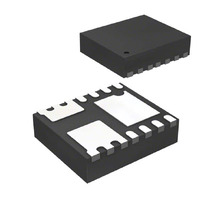Manufacturer Part Number
MIC3385YHL-TR
Manufacturer
Microchip Technology
Introduction
MIC3385YHL-TR is a power management integrated circuit (PMIC) that includes dual output voltage regulators: a synchronous step-down (Buck) regulator and a linear regulator (LDO).
Product Features and Performance
Synchronous step-down (Buck) regulator
Linear regulator (LDO)
Dual output capability
High switching frequency of 8MHz which allows smaller external components
Capable of delivering adjustable voltage down to 1V at 1A from Output 1
Output 2 can deliver 1V at 120mA
Operates over a wide supply voltage range from 2.7V to 5.5V
High operating temperature range from -40°C to 125°C
Product Advantages
High integration reduces system complexity and board space requirements
High-frequency operation minimizes the size of external components
Dual outputs offer flexibility for powering different sections of a system
Key Technical Parameters
Number of Outputs: 2
Frequency Switching: 8MHz
Voltage/Current Output 1: Adjustable to 1V, 1A
Voltage/Current Output 2: 1V, 120mA
Voltage Supply Range: 2.7V to 5.5V
Operating Temperature Range: -40°C to 125°C
Quality and Safety Features
Built to withstand a wide range of operating temperatures and voltage conditions, ensuring reliable performance
Compatibility
Compatible with a broad range of electronic devices due to its flexible supply voltage and dual nature of output voltages.
Application Areas
Ideally suited for battery-powered devices, portable electronics, and smart devices requiring efficient power management solutions
Product Lifecycle
Current Status: Active
No indication of discontinuation, continuing availability of product replacements or upgrades
Several Key Reasons to Choose This Product
High-efficiency dual-output design accommodates diverse power needs
Compact packaging suitable for space-constrained applications
Robust operation over a broad temperature and voltage range ensures stability in various environments
Fast switching capability allows for efficient power conversion and minimal energy loss



 MIC33263YGK-T5Microchip TechnologyIC REG BUCK ADJUSTABLE 2A 20QFN
MIC33263YGK-T5Microchip TechnologyIC REG BUCK ADJUSTABLE 2A 20QFN MIC33163YGJMIC
MIC33163YGJMIC MIC33153-SYHJ-TRMicrochip Technology4MHZ PWM 1.2A INTERNAL INDUCTOR
MIC33153-SYHJ-TRMicrochip Technology4MHZ PWM 1.2A INTERNAL INDUCTOR